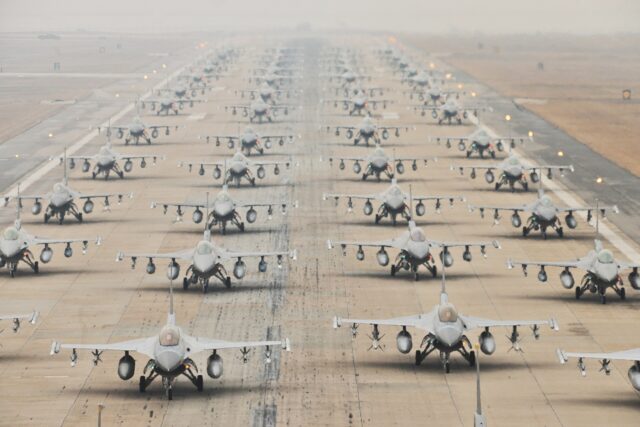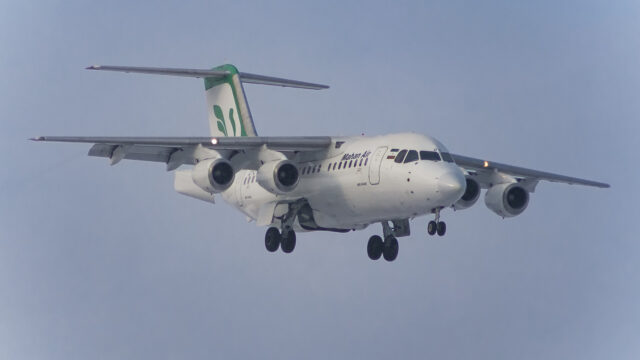AI battle manager tested with US Air Force fighter jets in landmark Pentagon exercise

August 28, 2025

For the first time in US military history, combat pilots in fighter jets were directed in real time by an artificial intelligence air battle manager.
No experiment in a simulator. No lab test. Real pilots, in real jets, receiving tactical commands from a machine.
Uncovered in an exclusive report by Fox News Digital, the Air Force and Navy ran the test using Raft AI’s Starsage tactical control system on F-16s, F/A-18s and F-35s during a joint military exercise designed to evaluate new weapons systems, advanced communications and battle management platforms.
The Pentagon test, conducted sometime this August, represents more than a technical leap. It signals a profound moment of change: not just in military capability, but in our understanding of what roles humans still play in life-or-death situations and whether we’re willing to hand some of them over.
AI battle managers: Smarter, faster, riskier?
Traditionally, human air battle managers on the ground help fighter pilots navigate combat zones by analysing radar, tracking threats, and issuing mission-critical instructions over the radio.
But in this exercise, those responsibilities were handed to StarSage, the AI-powered tactical control system.
Unlike human managers who juggle multiple aircraft, StarSage works in a one-to-one ratio, functioning like a personal co-pilot. It cross-references sensor data, mission plans, and airspace inputs in real time, enabling decisions in seconds rather than minutes, the report said.
StarSage both speeds up response time and improves accuracy, allowing pilots to make decisions that once took minutes in just seconds.
“In the air battle manager’s case, it’s not a one-to-one ratio: one air battle manager is helping several pilots,” Raft AI CEO Shubhi Mishra explained to Fox News Digital. “The autonomous agent we built is one-to-one, at the beck and call of each pilot.”
During the test, pilots checked in with the system, which confirmed whether the required aircraft were airborne. When asked for a threat assessment, StarSage issued a ‘picture call,’ identifying five adversary aircraft, the first known example of AI delivering real-time tactical awareness in the air.
“We haven’t seen our enemies test any similar technology, so I think this is groundbreaking,” Mishra told Fox News Digital.
Civil aviation safety could also benefit from AI
While the implications for military operations are significant, the technology could also reshape aviation safety for civilians.
Earlier this year, 67 people were killed when a regional airliner collided with a Black Hawk helicopter near Ronald Reagan National Airport. A miscommunication meant the helicopter crew never received a critical instruction. The commercial pilots had no idea a helicopter was in their path.

”If the FAA had this technology, that never would have happened,” Mishra told Fox News. “It’s just data and then execution on the data.”
The potential to eliminate such tragic lapses is what fuels both excitement and urgency in the AI aviation sector.
Will future fighter jets have human pilots at all?
As AI capabilities rapidly improve, military leaders are increasingly asking: Should future jets even have pilots?
The Pentagon is investing billions into next-generation aircraft, many of which are being designed to fly autonomously or with limited human input. Some argue that the F-35 should be the last manned fighter jet ever built.

But that view is far from unanimous. Many current and former pilots believe AI should assist, not replace, those who fly.
Shubhi Mishra agrees, with caution. “If it’s a life-or-death decision, humans should always be in the loop,” she said. “But in terms of the technology being capable of doing this, I think it’s already here. The question is, do we let it?”
AI is finding a place in wider defence operations
Beyond the cockpit, Raft AI is also pushing into strategic space-based intelligence. Through a newly awarded US Air Force contract under the TENCAP HOPE 2.0 programme, the company is working to make national satellite data available to frontline operators in real time.

In other words, it’s not just fighter pilots who will receive tactical input from AI. Soldiers on the ground, drone operators, and battlefield commanders could all soon be aided by space-fed, AI-powered platforms that fuse data into coherent, immediate decisions.
“Increasingly, warfighting is becoming a data problem,” Mishra said. “And data is something AI can process far better than humans.”
How much should AI be trusted?
What happened in the sky that day wasn’t just about military dominance or technological achievement. It was about a deeper question: how much of human responsibility are we willing to hand over to machines?
AI didn’t fire a missile. It didn’t take a life. But it did issue commands that might one day decide those outcomes. That shift, subtle but sweeping, will affect more than pilots and generals. It touches on how we trust technology in every domain of life.
Whether in medicine, aviation, policing, or public safety, the choice may no longer be whether AI joins us, but whether we allow it to lead.
And as this quiet revolution takes flight, it’s no longer a question for the future; it’s already in the sky.
















